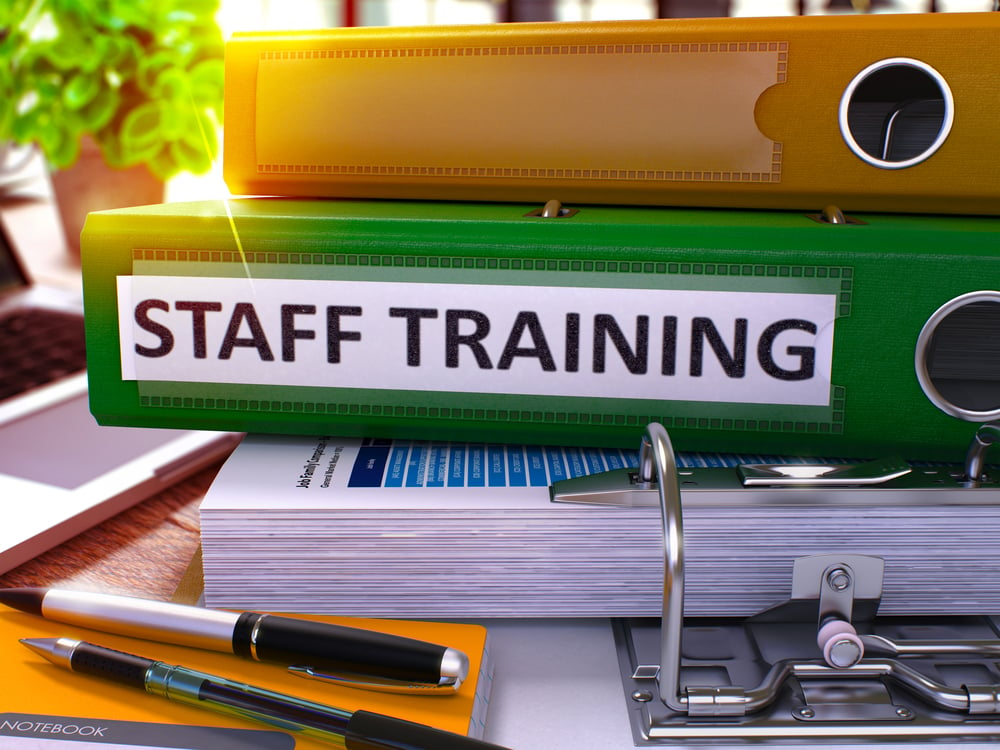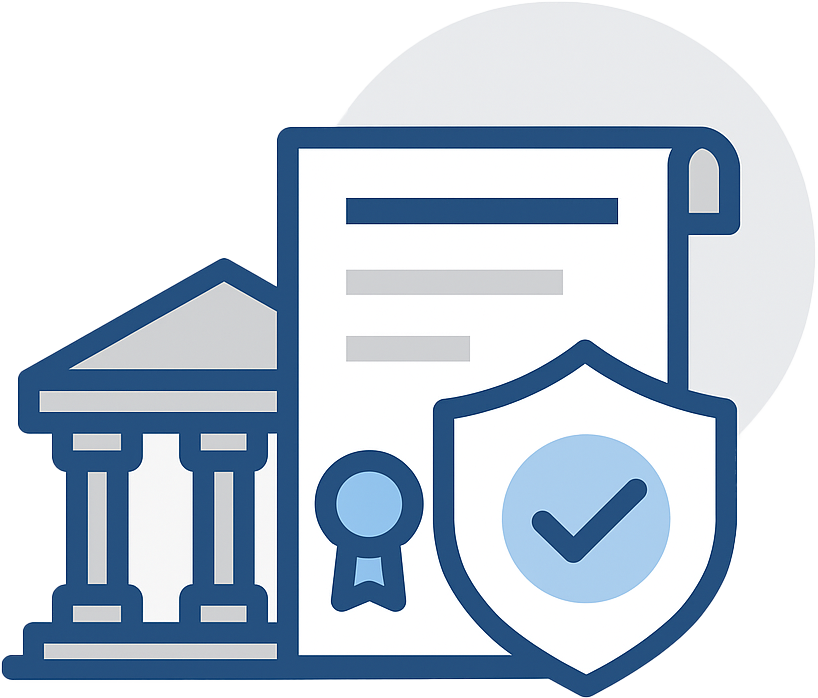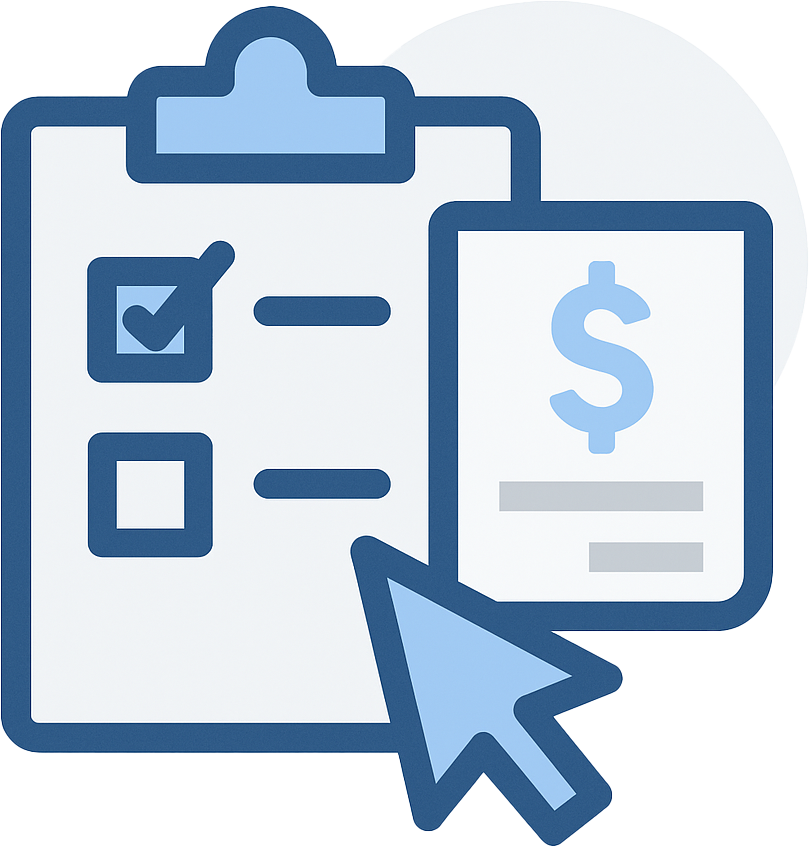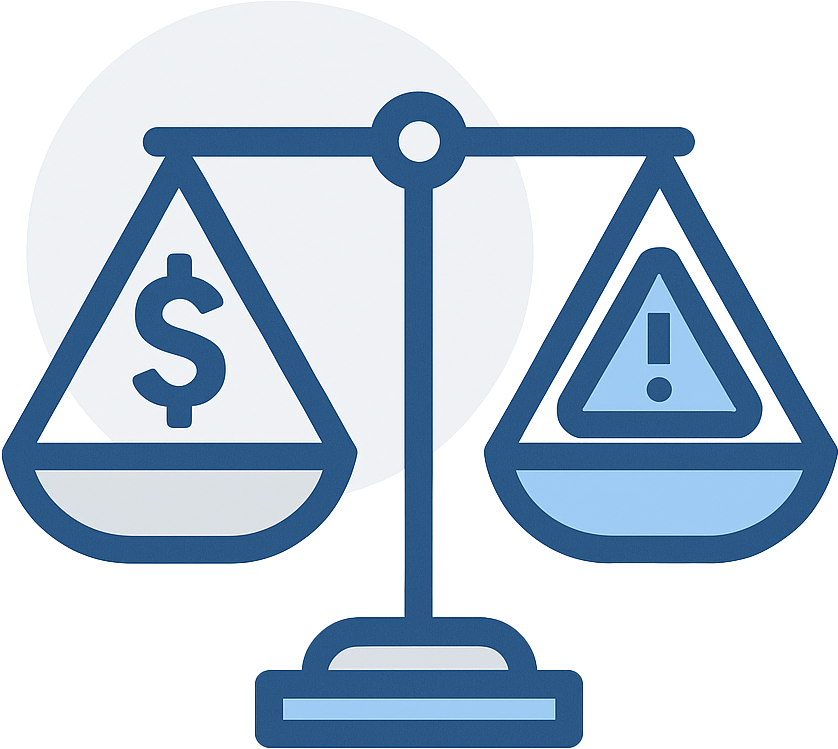Environmental Training, Explained: Who Needs It, Types, Options, Costs, Timeframes, and More!
If you’ve ever felt confused about what environmental training actually involves, or what your company really needs to be doing - you’re not alone. The rules aren’t always clear. There’s no universal checklist. And if you get it wrong, the consequences can be serious.
Some companies do training because they’re required to. Others do it because it’s the right thing to do. And most? They just want to make sure they’re not missing something important.
In this guide, we’re breaking it all down in plain language: what environmental training is, who needs it, how often you should be doing it, how much it costs, and what your options are if you want help. Whether you’re trying to stay compliant or just get better at how your team operates, you’ll walk away knowing exactly what your next step should be.
Table of Contents
What Is Environmental Training?
“Environmental training” can mean a lot of different things, depending on your industry, your operations, and what kind of expectations are placed on your team. But in general, it falls into a few clear buckets. Let's take a look at each.
Required Regulatory Training
This is the big one (and probably the reason you’re here).
Required training means your business is subject to specific environmental regulations, and those rules say you have to train your employees on them. In a nutshell, this is essentially awareness training - what the regulations are and what you need to do to stay compliant with them. Think annual SPCC training, NPDES stormwater permit training, and so on. If it’s part of a regulation, it’s not optional. It’s mandatory.
Here’s the catch: the rules often don’t spell out exactly how to do the training or what to include. So while you technically have to do it, the expectations can feel pretty vague. If an inspector decides what you’ve done isn’t sufficient, you’re at risk for violations or even fines. That’s why understanding the intent of the rule (and getting guidance from people who’ve done this before) really matters.
Not every regulation requires training, but many do. If your operation holds permits or is covered by federal or state rules, it’s worth double-checking what’s required and how often.
Supplemental Regulatory Training
This is training that’s usually focused on specific skills or tasks – actionable things that can be done right (or wrong). These are things that could (and may) be covered in your regulatory training, but they're important enough that they might also justify their own separate session. This is less of the cloud-level "what you need to do" and more like the nitty-gritty "how to actually physically do this task the best way at our location". It’s not necessarily required, but it’s still related to staying compliant with the core regulations you face. For example:
- Teaching your team how to properly collect a stormwater sample
- Training someone on how to do an SPCC inspection
- Walking through your site-specific hazardous waste transfer procedures
- Practice drills on what to do if a spill occurs at your site
- Regular "toolbox talks" with staff giving high level details on your specific permits
Even though these types of training may not be directly written into a regulation as being required, they help ensure your team actually knows how to do what the regs expect in practice and how to execute on tasks tied to those regulations. And when done right, they reduce the risk of mistakes and improve inspection outcomes.
Non-Regulatory Training
This is the “above and beyond” category. It’s not about compliance, it’s about improvement and being an environmental leader in your industry. The two above categories are more or less "things you have to (or should) do right". This one isn't about what you have to or should do, it's what your company actually wants to do! Examples include:
- Explainers on your site's recycling program
- Training on energy efficiency or water reduction
- Teaching employees how your environmental management system (EMS) works
These are the things you do because you're trying to create a stronger, more environmentally responsible operation, not because someone told you that you had to. And more and more companies are investing here, especially as environmental performance becomes part of branding, recruiting, and customer expectations.

A Complete Environmental Training Program
Put all the pieces together, and you get a complete training program. In our opinion this is the ideal setup, and it’s becoming more common. A complete training program includes all of the above types:
- Clear, compliant coverage of required training
- Task-specific, hands-on training tied to your operations
- Broader education around your environmental goals and values
Instead of scrambling once a year to check the box, your training becomes structured, proactive, and part of how your team works. It’s the difference between doing training because you have to versus building a program because it actually helps your business.
What Environmental Training ALSO is... but just not from RMA.
That's a weird sentence but let me explain. Environmental training, as we just described can mean a lot to a lot of different people.
For example, you might want to take a course on awareness regarding climate change topics. Or a training course you could use for some type of college credit. Maybe it's accredited environmental training for continuing education.
Regardless, saying I need environmental training is kind of like saying I need to see a health professional. There's a big difference between an oral surgeon and a nutritionist, but they're both health professionals!
Here at RMA, we're talking primarily about environmental training as it relates to you businesses and operational requirements or best practices. That's what we do, and that's what we help people with, which is why we're talking about that here today.

How Do You Get Environmental Training?
Short answer? It depends.
There usually isn’t a strict rule about how environmental training needs to be done, or who has to do it. Most regulations don’t say “you must hire a consultant” or “you must use this exact PowerPoint.” They just say that training must happen... and that it has to be effective. That leaves a lot of room for interpretation. A lot!
So yes, if you know what you’re doing and feel confident in the subject matter, you can run the training yourself. You might walk your team through a few slides, have a whiteboard session in the breakroom, or lead a quick huddle in the yard. As long as your people walk away knowing what they need to know (and you can prove it if asked), it counts.
But for many companies, that gray area feels risky, so they turn to professionals for help.
Types of Environmental Training You Can Get
If you decide to bring in outside support (like RMA), there are a few different formats to choose from. We offer all of these, and each one is useful in different situations:
- Online Interactive Training (Self-Paced) - This is web-based training where each employee logs in, works through interactive content on their own schedule, and gets credit for completion. It’s ideal for teams that have computer access but work conflicting shifts, travel, or just need flexibility. This is usually done over a learning management system, or LMS.
- Video Training - A pre-recorded video series that covers the material in a clear, engaging way. You can either send employees a link for each to watch on their own, or play it for the whole group in a conference room. This is great for companies who want an easier lift than the self-paced training, or for those with large teams and limited internet access.
- Training Materials for Internal Use - Want to run the training yourself, but need better materials? We can build out custom slide decks, speaker notes, handouts, checklists - whatever your in-house trainer needs to confidently lead a session. Then the ball is in your court!
- Live Webinar Training - A real-time virtual session with one of our environmental pros. We’ll hop on a video call with your team, walk through the training live, and answer questions on the spot. Perfect for smaller teams or remote offices.
- In-Person Training - If you prefer the face-to-face experience, we can come to you. We visit your facility, meet with your staff, and lead the training in-person. This works well when your team isn’t computer-based or when you want hands-on walkthroughs.

So, Which Type Is Best?
Totally up to you.
- If your employees are tech-savvy and work conflicting schedules, you might be best off with online interactive.
- If you’ve got a big group that doesn't have internet access, but you do have a training room with a projector, a video shown in-house might be your best bet.
- If computers aren’t available at your facility, in-person might be the way to go.
We find web-based options are the most common mix of convenience and clarity, but every operation is different. What matters most is that your team understands the rules that apply to them, how to follow them, and what their role is in keeping things compliant.
If you’re not sure which format is best for your specific operation and needs, just ask - we’re happy to walk you through it. Or, to check out our currently available online course library, click here!
What About Custom Environmental Training?
Now we’re talking! Custom environmental training takes things to the next level. Instead of using generic examples, vague scenarios, or a one-size-fits-all video about some warehouse in a different industry, we build your training around your actual facility and the real-world situations your team faces every day.
Most of the options we covered earlier (like off-the-shelf online courses or standard PowerPoint webinars) tend to follow a pre-set format. That’s fine for many situations, but sometimes it can feel a little disconnected. If your team is sitting through training that doesn’t match what they actually do, they’re probably zoning out… and missing important info in the process.
Custom training flips that. It uses your operations, your permits, your stormwater sample locations, your housekeeping protocols - all of it - as the foundation. Your pictures, your logos, your colors - training that is actually for you. That means your team isn’t just learning what someone somewhere should do. They’re learning what they should do, on your site, with your equipment, for your programs.
Why does that matter? Because:
- People pay more attention when they recognize what’s being talked about
- You avoid confusion or misapplication of generic guidance
- You make training more practical, more relevant, and more likely to stick
And from a compliance standpoint, it’s a win too: it shows regulators that you’re not just going through the motions. You’re taking environmental responsibility seriously and making sure your staff knows exactly how to meet your specific obligations the best you can.

Our Custom Training Development Options
At RMA, we build custom training for all types of businesses, from concrete plants to marinas to manufacturers and beyond.
Need a custom slide deck for your training manager to walk through? Done. Want a full-length video that talks through your site specifics? We’ll shoot it. Prefer an interactive online course your team can take on their own time? We’ll build it just for you.
Whatever you're envisioning, there's a pretty good chance we can pull it off. Custom doesn’t mean complicated. It just means the training actually matches your world, not someone else’s. If you'd like to explore custom training options for your team, check out our custom training development page here, or reach out to talk here!
How Much Does Environmental Training Cost?
Ah yes, the million-dollar question. And the honest answer? It depends.
Environmental training can cost anywhere from zero dollars to several thousand - all based on what kind of training you need, how it’s delivered, and how customized it is.
Obviously that range isn't very helpful, so here’s a quick breakdown to give you a sense of how those numbers change:
- Free (DIY) - If you’re handling training in-house and already know the material, it could cost you nothing. You might run through a few slides, lead a quick discussion, or put together something from scratch. It’s free on paper, but keep in mind the tradeoff: time, clarity, and risk. If you miss something or deliver it poorly, it could cost more in the long run.
- Bundled with a Service - Sometimes training comes included with other environmental work. For example, if you hire us to develop your SPCC plan, we'll include SPCC training as part of the package, so you’re not paying for it separately. This is a common (and cost-effective) approach for required regulatory training.
- Canned Online Courses - These are pre-built, off-the-shelf interactive or video trainings you can purchase and assign to employees. Prices usually run between $50 and $250 per person, depending on the topic, course length, and level of interactivity. They’re convenient, but they’re also generic.
- Canned Video Training for Groups - If you’re buying a license to show a training video across your company (especially for large teams), expect a flat fee in the low thousands. Some firms charge for total headcount, others offer unlimited access for a set rate.
- Live Webinars - For a live, consultant-led webinar, you’ll typically pay for the consultant’s hourly rate, plus prep and administrative time. Rough estimate: around $1,500, but that can go up or down depending on the complexity and scope.
- Custom Training - Here’s where the price really varies. Custom work means custom pricing. A simple online course using photos you send us? Maybe $1,500. A polished, site-specific, fully produced 2-hour video with on-site footage? Could be $25,000. It's like anything else, the more specific and professional you want it, the more it costs, but also, the more valuable and reusable it becomes.
Want a real cost for environmental training?
If you’re trying to get a sense of what your vision might cost, just reach out. We’ll ask a few quick questions, and give you a ballpark number - no pressure, no upsell. Just helpful info so you can plan with confidence.

How long does environmental training itself take?
One of the most common questions we hear is, “How long does this training actually take?” Truth is, there usually isn’t a hard-and-fast rule. Most environmental regulations don’t say, “This must be a 60-minute session.” They just say training must happen... and again, it has to be effective.
That means if you can cover what you need to cover in 15 minutes, and your team walks away clear on what to do? Great. On the other hand, if your program is complex or covers multiple areas, you might need an hour or more to do it right.
In our experience, most solid training sessions fall somewhere between 30 minutes and 2 hours. That gives you enough time to explain the “what” and “why,” walk through site-specific examples, and allow for everything to absorb without dragging it out unnecessarily.
Of course, if you're running regular sessions (like monthly toolbox talks or quarterly refreshers), those might be shorter and more focused. And obviously if you're just training because you want to (and not because a regulation requires it), length is totally your call. It all comes down to what your people need and what your programs require.
How long does it take to get custom environmental training?
Would you believe it if we told you it depends!? It does! How custom are we talking? There are too many factors and types of training to lay it all out now, but here are a couple examples to give you a rough idea based on what kind of project you’re considering:
- Simple custom online course using photos or docs that you send us: About 2-4 weeks from start to finish. Quick turnaround, fairly minimal logistics.
- More involved materials (custom slides, scripts, guides, etc. to match your brand): Typically 4-8 weeks, depending on how many rounds of review and edits you want and whether we'll need to collect facility media ourselves.
- Full-length, on-site video training with scripting, filming, and editing: These projects are more like 6–12 weeks, sometimes longer. There’s pre-production (storyboarding, scripting), travel coordination, filming at your facility, editing, review, and delivery. If you want something polished and professional, it takes time - but it’s usually a one-time investment that you can reuse for years.
There's lots of middle-ground here that we aren't covering, it just really depends on what you're looking for. If you need something fast, just let us know. We’ll be honest about what’s doable and help find the fastest path that still checks all the right boxes.

Who Needs Environmental Training?
Let’s start with the obvious: if a regulation says training is required, then yes, someone needs to be trained. That part’s non-negotiable. But the harder question is: who exactly?
A good rule of thumb is this: anyone who could realistically impact your compliance should be trained. And in most cases, that’s not just one person. It’s often a lot of people.
We're talking about:
- The "boots on the ground" like folks in the yard or on the shop floor
- Their supervisors and team leads managing daily work and responsibilties
- The EHS or compliance managers running the environmental program
- Sometimes even senior leadership, especially if decisions they make affect how environmental rules get followed
It’s usually not spelled out. A stormwater permit might only say “annual training must take place”. But who that includes? That’s up to you. If someone’s work could cause a violation, they should understand the rules that apply to them. And if there's an inspection or violation caused by someone who wasn't trained and should have been, consider that two violations.
Bottom line: if your business is subject to environmental regulations, training isn’t optional, and it’s not just for “environmental people.” It’s for anyone who plays a role in staying compliant. The key is figuring out who, for what, and how often, and making sure they actually get what they need.
Training the Trainer: The Minimum You Should Do
If you’re not going to invest in professionally developed training for your whole team, that's fine. For a lot of people out there, that's a very prudent business decision. At the very least you should invest in training the person who’s going to be doing the training! The idea is simple: someone at your facility takes professional training, then relays that information to your team.
We’re big believers in this approach. Every company has someone who “owns” the environmental program, whether that’s an EHS manager, operations lead, or whoever ends up wearing the compliance hat. That person doesn’t need to be a formal instructor, but if they’re the one explaining regulations to your team, they should actually understand those regulations in depth.
It’s a smart, scalable way to keep training in-house without compromising quality. And if you’re only going to invest in one piece of the puzzle, this is the one that can make the biggest difference.

How Often Do I Need to Do Environmental Training?
Most regulations that require environmental training say it needs to happen at least once per year. That’s the standard baseline, especially for things like stormwater permits (NPDES), SPCC plans, and similar regulatory frameworks.
But here’s the truth: annual training is the bare minimum. It checks the compliance box, but it doesn’t always lead to real understanding or good habits on the ground.
That’s why many companies choose to go above and beyond with more frequent trainings, like monthly toolbox talks or quarterly refreshers. These sessions help keep key practices top of mind: where the spill kits are, how to log inspections, what to do during heavy rain events, and so on.
Some programs break it up by topic: stormwater one month, hazardous waste the next, then SPCC, etc. Others just use it as a regular rhythm to reinforce their expectations and culture around environmental responsibility.
How often you should train depends on:
- What regulations apply to your facility
- How many staff are involved in regulated activities
- How complex your operations are
- How often things change on-site (new hires, new equipment, new permits)
- What your environmental goals are
For most companies, we recommend doing at least one full session a year, plus regular touchpoints throughout the year to reinforce key points and keep everyone sharp.
Environmental Training & Documentation
Here’s the bottom line: if you don’t have documentation, your training might as well not have happened. Regulatory agencies (whether it’s the EPA, your state agency, or a local group) expect to see clear proof that your team was trained. That means keeping track of who attended, when it happened, what was covered, and how the training was delivered.
There’s no one-size-fits-all rule for how long to keep those records, but three to five years is the common range. To play it safe, we always recommend keeping everything on a rolling five-year basis. That way, if an inspector asks to see past records (and they will), you’re ready.
Also, make sure your records are actually organized and easy to find. A forgotten binder in a filing cabinet or a PDF buried in someone’s email behind a forgotten password won’t do you much good during an inspection.
When you do training with us, we’ll always provide proper documentation, whether it’s a certificate of completion from an online course or a roster and agenda from a live session. Whatever the format, you’ll have what you need to show you did it right.

Where to Get Environmental Training
So where do you actually go to get this training?
In some cases, you don’t have to go anywhere - you can do it yourself. If you’re confident in the content, understand the regulations, and know how to communicate it clearly, in-house training can absolutely work. Plenty of companies put together their own PowerPoints, lead quick toolbox talks, or walk through procedures on the job site. That’s totally valid, especially for routine or supplemental training.
But if you're not 100% sure what’s required (or just don’t want to risk missing something) it can make a lot of sense to bring in outside support. That’s especially true if you’re dealing with a regulatory deadline, trying to train a larger team, or just want to make sure the material really sticks. Shameless plug: that’s where RMA comes in. We provide environmental training in whatever format works best for your team:
- Online courses and videos employees can take on their own
- Pre-recorded video training you can show to whoever, whenever
- Custom slide decks and materials for your internal trainers
- Live webinar sessions
- On-site training at your facility
- Fully custom programs built around your site, your staff, and your specific regulations
To check out our online library of courses available right now, click here!
To request custom environmental training development, click here!
Whether you’re looking for something simple and compliant, or you want to build out a full training program that runs smoothly year after year, we’ve done it. And we’re happy to help you figure out what makes sense based on your goals, team size, and budget.
Have questions? Just reach out. We’ll walk you through your options, no pressure.



















